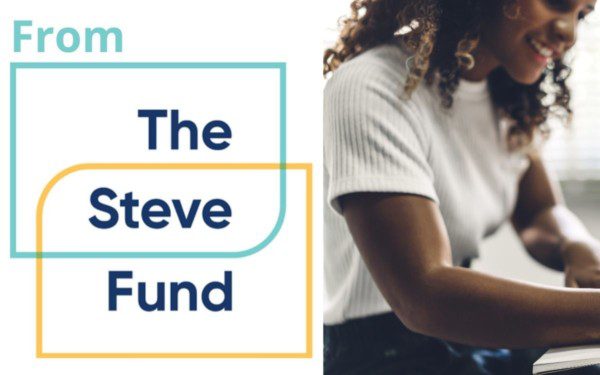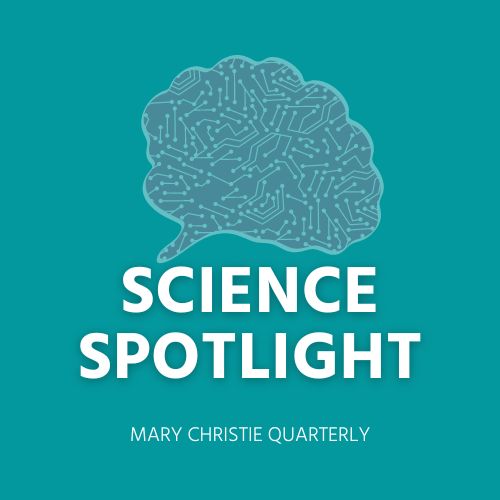The Michigan Daily, the University of Michigan’s student newspaper, was the first to break the story.
Computer science professor Walter Lasecki had faced four allegations of sexual misconduct. Not only was the university aware of the allegations, but its investigation determined his behavior did not violate the school’s harassment policy. The same was not true, The Daily learned, for a computer science association linked to Lasecki. The association’s separate investigation found the professor in violation of its harassment policy and banned him from events for five years.
Just three months after The Daily published its investigation, Professor Lasecki resigned. For some following the coverage, the dots between the student newspaper’s revelation and the professor’s resignation were simple to connect.
“I think the student newspaper’s most impactful stories have been about professors and sexual misconduct allegations,” said Claire Hao, editor-in-chief of The Daily during the Lasecki investigation. “In several of those investigations, the professors have been fired or disciplined in some way.”
Holding the university to a high ethical standard is not a new job for The Daily, or for campus newspapers across the country. Many tote decades- and even centuries-long legacies of speaking student truth to administrative power. Although stories never exist in a vacuum, they stand to be one factor weighing in on university decisions.
At Michigan, student newspaper coverage seems to have paved the way for the departure of professors accused of sexual misconduct like Walter Lasecki or Steven Shipps. At Harvard University, an investigation exposing a racist, sexist culture within the campus police department preceded the retirement of the chief. At University of North Carolina (UNC), the editorial board slammed the administrative mismanagement of COVID-19 safety protocol before an announcement that campus would shut down for the fall.
Just as traditional media keep our nation’s lawmakers accountable, student newspapers, and the budding journalists that staff them, instinctively take on the role of watch dogs to university policymaking. But, if the job of student newspapers is familiar, it doesn’t mean it’s gotten any easier. Today, the COVID-19-era continues to usher in a unique set of challenges for students. Their emotional and behavioral health – impacted by isolation, racism, and public safety-related stresses, to name a few – has risen to high levels of concern and, with it, the stakes for newspaper coverage.
So, when it comes to the current college mental health crisis, how can student newspapers help turn the tides, specifically where policy is concerned? To what extent do their powers extend into the mental health realm, and what obstacles, including their reporters’ own mental health, stand in the way?
When COVID-era restrictions limited where New York University (NYU) students could eat on campus, new challenges around food arose for those already struggling with disordered eating. Washington Square News (WSN), the student newspaper, gave rising-senior Alyssa Goldberg the platform she needed to bring the issue to light.
Once a writer for her high school newspaper, Alyssa originally left journalism behind to focus on her primary interest: mental health advocacy. After learning that WSN was starting a Features Desk, she recognized an opportunity to dive into campus wellness concerns and reconsidered her step away from writing. “I didn’t see enough on mental health, and I wanted to be able to bring that perspective,” she said.
For her first article, an op-ed, she conducted interviews with some of her peers struggling with NYU’s new dining restrictions and paired them with a personal commentary urging the school to correct the problem.
Alyssa wasn’t the only one who took issue with the dining protocol. She said one of the students she interviewed served on the Student Government Assembly and was in the process of drafting her own letter to the administration asking for more dining options. “I do think my article had an impact,” Alyssa said, “because shortly after they did open up a few more [dining] spaces for students.”
A few months later, Alyssa published another article, the first ever for the Features Desk. The piece looks back on the tragic history of NYU’s Bobst Library, where students once jumped to their deaths before the school installed preventative barriers. The library’s architectural evolution was a starting point to consider how the university has responded to student mental health complaints in the past and probe more recent mental health challenges for students.
Alyssa was encouraged by the community’s engagement with her piece. Executive director of NYU Counseling and Wellness Services Zoe Ragouzeos responded with a “Letter to the Editor.” Alyssa says WSN’s Instagram post about the article reached over a thousand likes, compared to the hundred or couple hundred that stories typically received.
“It was trending for a week on the site, which doesn’t typically happen,” Alyssa said. “I think [it was because the content] of the story was very jarring, and it peaked interest from students.”
Sometimes, the mark of a student newspaper’s influence is not only student engagement, but outright controversy. Ashleigh Fields, former editor-in-chief of Howard University’s student newspaper, The Hilltop, said its coverage of a month-long student protest last fall saw student engagement ‘skyrocket’ but also met “pushback” from the administration. Ashleigh believes “first amendment rights look a lot different” for her paper, which is student operated but university owned.
The protest at Howard was a mental health issue from start to finish: It began because students, some of whom already faced financial strains, were frustrated with poor housing conditions and a lack of communication from the administration. When they staged a sit-in for four weeks at the Blackburn University Center, they confronted additional stressors: isolation and threats of administrative discipline.
Ashleigh said she worked closely with the administration and the Student Press Law Center to ensure her reporting reflected the reality of student concerns, while maintaining objectivity. She countered attempts to take down or censure certain articles “so that the community could read what was going on and [to tell] what was truthfully happening.”
The Hilltop’s conversation around mental health continued throughout the year, as Howard and several other historically Black colleges and universities received bomb threats. In a “Letter from the Editor,” Ashleigh described student initiatives to expand the university’s support for students. “Other institutions had different policies, but at Howard, we were told to shelter in place during one of our bomb threats,” she said. “We never got a day off from class until our third bomb threat. We were still expected to attend classes and to be present.”
Now, Ashleigh said she sees her confrontations with the administration over the year as evidence of the honesty and rawness of the reporting. “I think that it set a huge precedent for students coming in next year—to say that student journalism is important and student journalists are journalists,” she said.
Others see this slightly differently. While these papers may influence media-mindful administrators, some say the fact that student journalists are still in training must be taken into account. “Administrations need to listen to student voices regularly, but it is important to encourage student journalists to adhere to the standards of professional journalists and make sure they have all the facts,” said Ragouzeos. “This is particularly important when covering sensitive subjects which have the potential to affect students’ use of critical university services.”
The Personal Toll
As University Desk editor for the Daily Tar Heel (DTH), UNC’s student newspaper, Allie Kelly was used to her role covering breaking news stories. That is, until over the course of one weekend, she became responsible for breaking the news of not one, but two student suicide attempts. The first incident fell on a Saturday afternoon and the next on Sunday morning.
“It was really kind of this cognitive dissonance of covering a student death while it was game day and everyone [was] rowdy and in their UNC gear and walking down the streets,” Allie said. Other students either hadn’t yet heard or fully registered the news. “I was in shock, I think.”
To write the story, she said she managed to turn on her “journalist brain.” But this reporting process was, thankfully, brand new to her. Suddenly, she needed to figure out how to confirm the reports with the university, how to handle privacy laws that protect the families involved, and what kind of language the situation required. “Unfortunately, I learned a lot.”
The tragedy from that weekend motivated The DTH to consider the path forward for its mental health coverage. “We really sat down and made a plan,” Allie said. “It’s like, ‘Okay, so I have this platform, and we have this platform. How do we identify holes in the system without making it seem like it’s hopeless?’”
Allie said the DTH team recognized it had the reporting resources, as well as the training, to take some of the onus off the rest of the student body. “We’ll do the research for you,” she said the staff decided. “Where can you get therapy in Chapel Hill? Where can you get affordable therapy in Chapel Hill? What is CAPS (Counseling and Psychological Services) actually for?”
“I think when there’s a campus-wide mental health crisis and people have died, as a student, I felt so powerless,” Allie said. “I don’t know how much [the reporting] made it better. If it made it better for one person, that’s awesome.”
At the same time, DTH decided to look inward to assess its own culture and policies around mental health. After the suicide, leadership decided to slow production for the week. It created protocol for how to break sensitive news to the rest of the staff. It now tries to make burnout a more open topic of discussion among writers and show them they have support.
Last year, burnout also weighed heavily on the staff at The Michigan Daily, where former editor-in-chief Claire Hao published an op-ed explaining why she was taking a week off from the paper. At the time, she had realized that the emotional and physical toll of balancing a 70-hour work week at The Daily on top of her academic course load was no longer sustainable.
In stepping back, Claire hoped to not only tackle her own anxiety but also set a precedent of wellness among the rest of the staff. She said she realized she was far from the only person at The Daily struggling with too many responsibilities and not enough time. “I think doing that—having a top person take a break when she needs it—helped encourage other people to take a step back when they need it and to ask for support,” she said.
Her leadership also made mental health a priority by cutting down production times and embracing hybrid work so staff could be more comfortable and sleep more. “Even before I took that break,” she said, “we were having conversations in the newsroom about burnout and how to have more sustainable workflows and how to communicate boundaries more effectively to each other.”
The implications of her self-care stretched past the bounds of The Daily newsroom. “Not only was there a lot of burnout within the student paper, which there was, there was also just burnout in the general campus community,” Claire said She said she believed writing about her own experience, rather than just quietly taking a break from her work, could help contribute to the campus-wide conversation about mental health.
After taking care of herself and encouraging others to do the same in the most public of ways, Claire returned to the newsroom after a week to find cake and posters signed in her honor. These acts of support for the people who do this work will be critical going forward as policies around the mental health of college students will become even higher priorities for college and university leaders.




